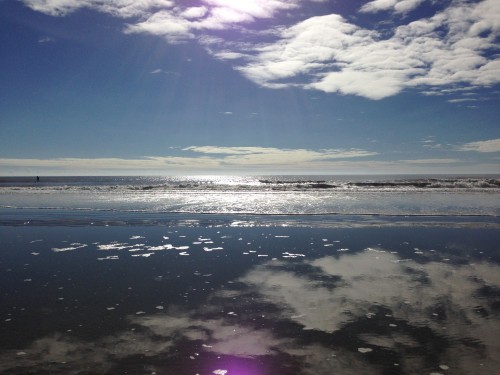YouÂre already aware of the shift toward image-centric content, and IÂm sure youÂve already started amping up the graphics in your blog posts, right?
The latest development is that even the Creative Commons licensed and free photography youÂve been using is not 100% reliable.
The safest thing to do by far is to take your own photographs. (Professional photographers, please stop reading here…)
Chances are, youÂre carrying around a pretty decent camera already, inside your smartphone. If you invest a little bit of time in learning some composition and editing skills, you can stop worrying about stock photos and image licenses forever. And you have unique photos on your site to boot! You may even find a new hobby, and decide to purchase a standalone camera to take it to the next level.
Top Photography Secrets for Bloggers
- Keep a visual mindset all the time. See that coil of rope? Could it illustrate a post about pathways? How about those birds lined up on the shore? Make it a habit to look around you for imagery wherever you go.
- Horizontal is good for blog posts. Don’t just reflexively hold your phone vertically all the time. Horizontal orientation works better most of the time for blogs, and for sliders and other graphics as well.
- Go as high resolution as you can. You’ll be glad later when you want to zoom in to a specific part of the picture.
- Use online editing tools like Picmonkey to make nice text overlays for social sharing or to add your site URL or copyright.
- Take a TON of photos. Think about the pros and how their shutters are snapping a hundred times during a photo session. If you want to capture that one great picture, take 10x the snaps.
- Make a spot to organize them (Evernote, digital albums, Dropbox folders). Create a dedicated place to upload your blog photos after you take them, and name them with descriptive names that will make them easy to pull into the right posts. Consider organizing into categories like Nature, Office, Architecture, or whatever suits your niche.
- Keep a backup. Be sure you keep a backup of your photo files, and don’t rely on your computer/laptop. Use the free services that are available, like Google Drive or Dropbox to keep them secure.
- Think micro. For casual photography, we often look at the big picture, or the family group, or the huge vista. For blog posts, you might want to think about the way a shadow hits the sidewalk, or the ladybug sitting on a leaf. Get small.
- Consider buying some pro tools. To get the lighting perfect on small objects, you can buy inexpensive, portable studios like a Modahaus. There are also inexpensive lighting kits like the Kick.
- Pay attention to tips from the pros, like these excellent photo ideas from National Geographic, or these great composition tips from Digital Photography School.
Have you tried your hand at digital photography? As a blogger, it can be a very useful skill-set!

